Project Gamma Card Game Rules Document
- If you have not seen it, watch the intro video
- This information is a work in progress
- Project Gamma is a temporary name. The project is being merged/using the world/setting of birdsandbees’ tabletop rpg project. Project Delta is the overarching ‘group’ that is creating project gamma among other things.
- See Card & TTRPG Outline & Plans and Card Game Onboarding for more general information.
- For info on setting up software for testing, see Card Game Testing Info.
This is a 1v1 card game, within the gameplay genre of trading card games (not necessarily the distribution model). The rules will support draft and constructed. We intend on making a reusable draft format for 2 players and one for more players. The game rules are being made to work both in paper and as a video game. You begin the game at 20 life and win the game by reducing your opponent’s life total to 0.
The game takes place in Atnia, the setting of Ciaban’s Tabletop RPG. A short briefing on the world can be found here: Atnia Introduction.
Rules for playing the game:
Shared Round
During each round players will take turns taking actions (mainly playing cards!). Only one player is the active player at a time, and only the active player can take actions. These actions include:
- Play a card or ability of a card - See “Playing Cards”
- Take universal actions such as passing, channeling cards, or attacking.
- Pass - By passing, the other player becomes the active player.
Zones
- Deck - Your deck of cards.
- Hand - Your hand.
- Reality - The main playing area / board. All cards that are currently in play live here.
- Combat zone - Part of / a subzone of reality, this is where units go during combat.
- Memory - When cards are destroyed or discarded, they go here. It’s the discard pile.
- Dream - Zone for cards & effects currently being played and not resolved yet. (stack)
- Void - Zone used for some things.
- Channel zone - Zone cards go after being channeled.
Parts of a Card
- Name
- Energy Cost - To play a card, you must pay energy equal to it’s energy cost.
- Source Requirement(s) - See “Power Sources”
- Type - See “Card Types”
- Subtype - See “Card Types”
- Speed - See “Playing Cards”
- Offense/Defense Stats - See “Card Types” & “Playing Cards”
- Rules Text - Explains what a card does. See “Playing Cards”
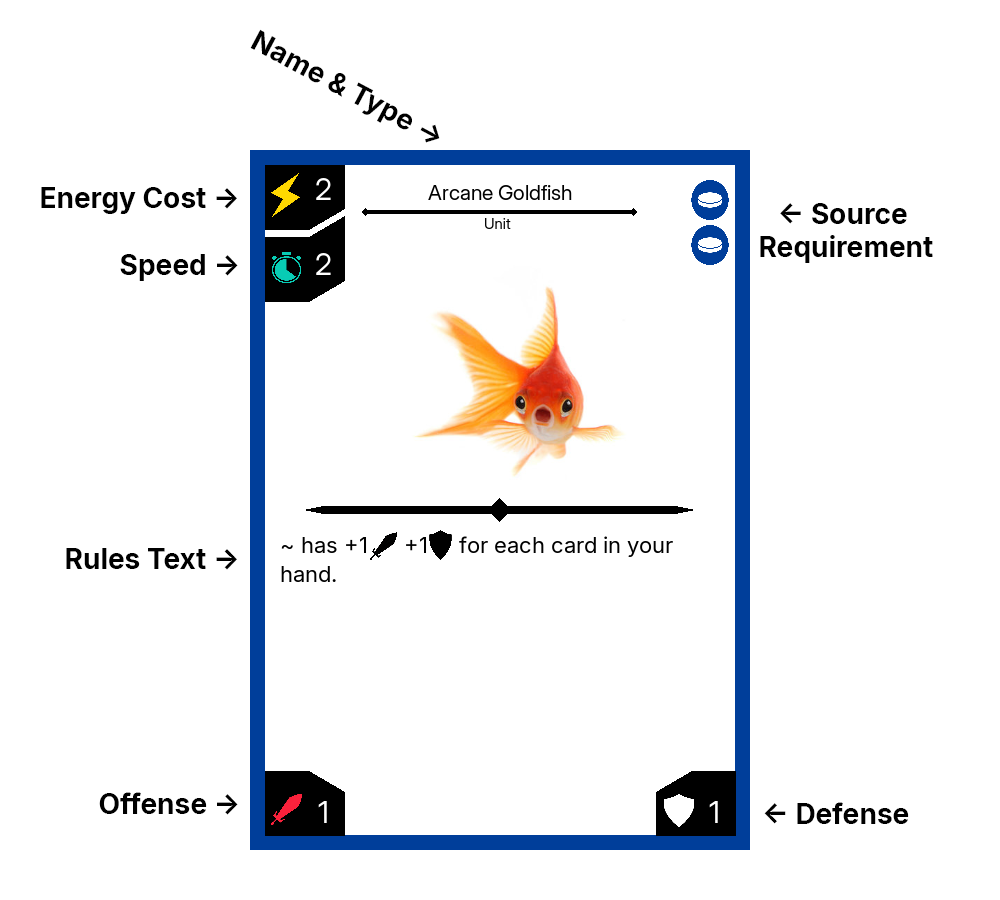
Kinds of game objects
- Card - Cards!
- Ability - Effects created by cards
- Triggered ability - Occurs automatically when indicated by the card they are on.
- Skill - Ability of a card that is activated by the player similar to playing a card.
- Universal Action - Actions such as passing, channeling cards, or entering combat, which are granted to players by the game rules rather than cards.
- Player health / life total
Energy System
There is a single (numerical) energy pool for each player, the maximum energy you can have at any given time is 10. At round end, players retain up to 3 energy and any excess is discarded (banked energy limit of 3 is separate from the main 10 energy limit). Players begin the game with 3 energy counters and gain an additional one after each round (maximum is also 10). Each round, players get 1 energy for each of their energy counters.
Power Sources
Sources are the main categorization of cards & affect which cards you will likely have in your deck, as to play cards from a source you must also have other cards of that source to meet it’s source requirement (appears as a number of symbols for given sources). The power sources are diegetic concepts people in Atnia value, they represent the ways you can rally new allies to your side and do magical feats. The 5 sources are:
- Arca - A chaotic and wild energy that has expanded throughout Atnia after the apocalypse. Highly magical, both destructive and creative, to many it is symbolic of the new world.
- Eminus - Your reputation among others or within a community. Trust built through a shared history or one’s reputation is important to those who value Eminus.
- Material - Resources people need and desire in the new world. While the other sources are largely conceptual, Material is grounded in the physical reality of the world. Food, lumber, salt, stuff that has value independent of concepts & social dynamics.
- Old World - Drawing from ancient magics & past civilizations. While also very magical, it is in many ways the opposite of Arca, a romanticization of the past & apposed to the chaotic new world. Strongly connected to the coins/currency of the old Atnian kingdom.
- Zelor - Passion, emotion, storytelling. One who values Zelor may join you if they truly believe in your cause or you give a rousing speech. Zelor magic draws from…
Source names subject to change, (particularly, Old World & Eminus).
Different people and factions within Atnia will value the different power sources differently and in varying amounts or combinations. These will determine the vibes of different factions, units, spells, and in general cards that you can include in your deck.
Cards may have one or more source requirements, indicating how many cards of that source you must have total/combined among your channeled cards and allied claims in the reality zone. If you do not meet the source requirement, you cannot play the card.
Currently the zone symbols are as follows: Arca is a purple ring of magical energy, Eminus is a yellow hand shake, Material is a green plank of wood, Old World is a blue coin, and zelor is a red book.
Card Types
- Unit - Units have offense stat in addition to their defense stat, and can attack and block. Other card types do not have an offense stat.
- Claim - Claims count towards source requirements while in the reality zone (as well as the channel zone).
- Item - Items cost 1 energy less for each round that has passed (1 less on round 2, 2 less on round 3, and so on.)
- Spell - Spells do what is indicated by their rules text on resolution, then are put into memory, unlike other cards which resolve to reality.
- Starting Location - A deck may have one starting location card. It begins the game face up in void, and can be put into hand at any time throughout the game at ∞ speed as a universal action by putting a card from your hand on the bottom of your deck.
Some cards will also have subtypes, but substyles do not have any universal rules significance
Playing Cards & Dream
To play a card, you must meet it’s source requirement and pay it’s costs.
When you play a card or ability, it is put onto Dream, and the player who did not play the card becomes the active player, who may then take an action or pass. Any new cards/effects put into dream are placed above other cards/abilities already there. Once a player passes, all cards in Dream (unresolved cards) are resolved in order of top to bottom.
When a card is played, it goes to Dream. When it resolves, it goes to reality (or memory if it is a spell). When a card in reality or dream is destroyed (such as by taking damage greater than it’s defense stat), it is put into memory. Damage only occurs to cards in dream & reality.
- To reiterate, you pay an ability or card’s cost to play it, and only once it resolves it does it’s effect and/or enters play.
- During the main phase, when all cards/abilities resolve, the player who did not begin the stack (by placing the first card in dream) becomes the active player.
- All abilities are placed into dream just as cards are. Universal actions do not go through dream, however.
Speed
Cards with a given speed number can only be played if there are that many or fewer cards / abilities currently in dream. You may however pay 3 life per number accelerated to speed up your card and be able to play it in response to other cards.
- Once a card has been played, the speed number is no longer relevant (it does not determine the order cards resolve in).
- If it is the main phase and there are no cards currently in dream, cards with negative speed values may be played as though they had a speed of 0.
- All ∞ speed effects are always placed above and resolved before any non ∞ speed effects. No player can take actions while they are in Dream, and they do not affect which player is or becomes the active player.
- Taking any action slower than ∞ speed causes the other player to become the active player.
When you are the active player and are taking actions, you may commit multiple non ∞ speed cards/abilities at once in a group. You must choose an order for them in Dream & each card must be fast enough to be played as if the ones below it were already there (you may accelerate them). Once you commit the actions, the other player becomes the active player as normal, and the group of cards/abilities only counts as a single card for the purposes of speed.
Advanced notes on timing rules and dream:
- If during dream effect resolution one or more new cards/abilities are put into dream that are not at ∞ speed, resolution stops, and the player not in control of the new top most card/effect becomes the active player.
- If effects would trigger simultaneously, they are put into dream all at once, in order of, from top to bottom:
- Effects from the first player in the round above effects from other players.
- Top to bottom, triggers from cards in: Dream, Reality (combat zone before the rest), Memory.
- Dream, top to bottom: Cards higher in dream to cards lower in dream.
- Reality, top to bottom: Cards on the left side of a players reality zone to cards on the right side of their reality zone (units, then items, then claims).
- Memory, top to bottom: Cards higher in memory to cards lower in memory.
- If multiple effects that require targets to be chosen are put into dream simultaneously, targets must be chosen for the bottom most effect(s) first.
- New cards arrive in memory above cards already in memory.
- All new cards arrive in reality to the right of cards already in reality. Attacking and blocking does rearrange unit order, and at end of combat all attacking/blocking units return to the rest of the reality zone on the left of cards already there, in the same arrangement they were in combat.
Channel System
All cards in hand can be channeled into the channel zone at ∞ speed any time you are the active player as a universal action. Channeling cards is primarily for fulfilling source requirements and getting rid of cards you don’t want to replace them with new ones at the end of the round.
- During the draw phase, your channeled cards will be recycled
- You may channel a card face up or face down. Cards channeled face down as wild cards count as being from all sources, but draw 1 fewer card at the end of the round (unless it is done during draw phase step 2).
Round Phases
- Pre round
- If it is not the first round of the game, the player with the highest total/combined offense across their units becomes the first player. If it is tied, the player who began as the second player in the previous round becomes the first player.
- Each player gets 1 additional energy counter
- Each player gets 1 energy for each of their energy counters.
- Each player unflips all their flipped cards.
- Move to next phase
- Round Start
- If an effect refers to round start, it happens here.
- Once all effects are resolved / there are no unresolved effects, move to the next phase.
- Main phase
- The first player becomes the active player (unless otherwise specified).
- When both players pass in a row while there are no unresolved effects, move to the next phase.
- This is the primary phase where players actually play the game, along with combat which players can enter from the main phase.
- Round End
- If an effect refers to round end, it happens here.
- Once all effects are resolved / there are no unresolved effects, move to the next phase.
- Draw Phase
- The number of cards total in a player’s hand, face up in their channel zone, + 1, (up to 10) becomes that player’s maximum hand size for the round.
- Each player puts all cards from their channel zone on the top and/or bottom of their deck in any order/combination (not revealed to other players).
- Players draw up to their maximum hand size.
- Begin next round
- Combat phase
- See “Combat”
If a phase/step does not explicitly make a player the active player, no player is active and therefore players may not take actions (such as playing cards).
- Note: We may try at some point making it so no cards/abilities can trigger during the draw phase or pre round phase
During the Pre Round phase, no card effects can occur.
Combat
During the main phase, while you are the active player and there are no unresolved effects, as a universal action you may start an attack by declaring your attackers.
Combat phase outline:
- Combat begins with the attacking player being active, declaring one or more attackers and committing any desired cards/effects to dream. After attackers are declared, any triggers/effects created are put into dream, however only ∞ speed effects are resolved.
- Defending player becomes active, declares up to one unit to block each attacking unit, and commits any desired cards/effects to dream. After defenders are declared, any triggers/effects created are put into dream, however only ∞ speed effects are resolved.
- If the defending player committed any non ∞ speed effects, the attacking player becomes active. Otherwise, or after a player passes, all cards and effects in dream are resolved, then all combating units simultaneously strike (deal damage equal to their offense stat) the unit blocking/being blocked by them, and if they are attacking unblocked, strike the defending player.
- End combat, return to the main phase, and the player who was defending becomes the active player. Notes:
- You may only attack twice per round.
- Both attacking and blocking causes units to flip.
- You cannot attack or block with flipped units.
- By attacking, the attacking player becomes the first player for the remainder of the round / until another player attacks.
- If the first action taken in a round is an attack, the attacking player forfeits their second attack for the round.
Starting the game
To start the game, randomly determine the first player. Each player shuffles their deck, (reveals & puts their starting location into play if the format has one), and draws 7 cards. Players may put any number of cards from their hand on the bottom of their deck to draw that many cards. After both players have finished drafting their hands, begin the first round of the game.
Extra Notes
Card Semantics
See the Naming V2 sheet in the Atnia Cards Sheet for info on words that appear on cards.
Here is some additional info:
- The brown symbols in the text box of cards are zone symbols. A zone icon may indicate which zones a card or effect can target, or which cards in what zones are relevant to it.
- Reality - Rolling Hills
- Memory - Tombstone
- Void - Swirly galaxy thingy
- Dream - Moon with zzz
- Hand - Fan of cards
- Deck - Stack of cards
- Channel Zone - Hand with a magical swirl
Some Random Card Examples
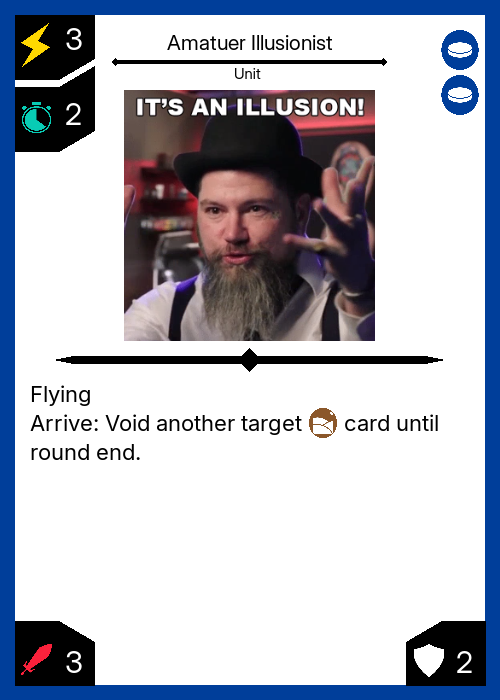
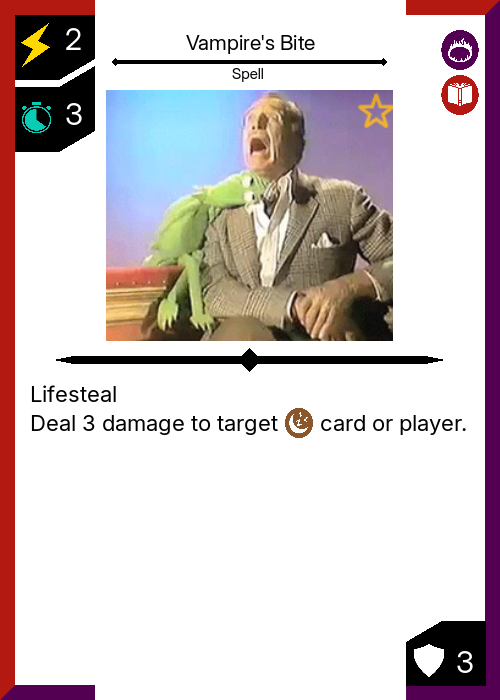
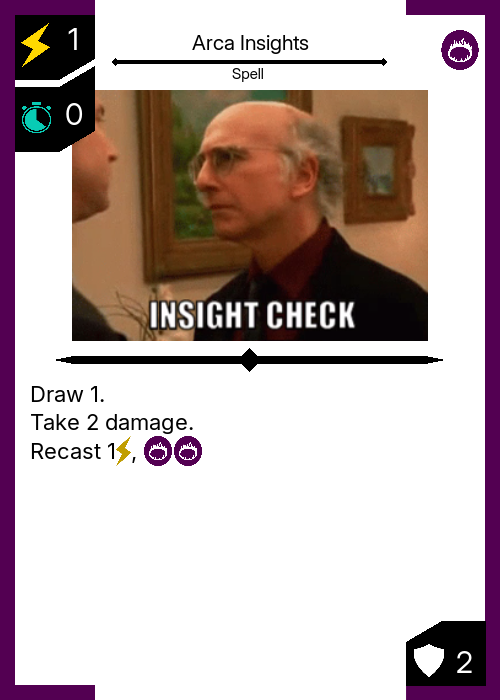
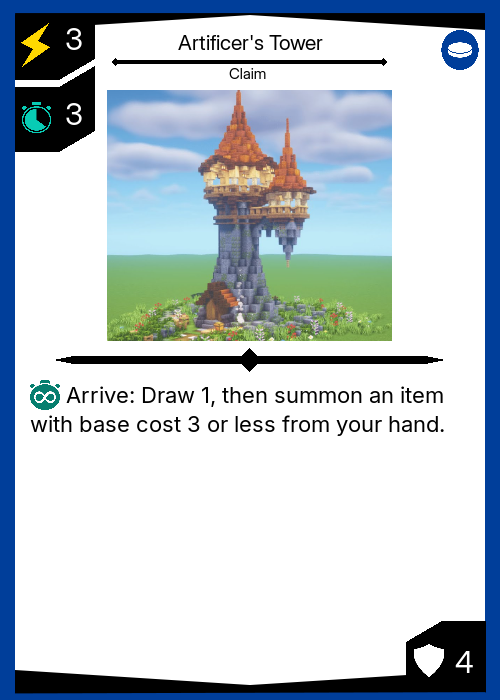
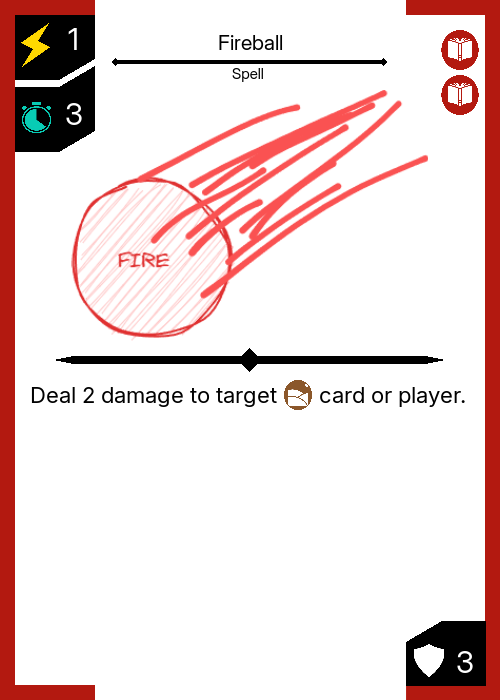
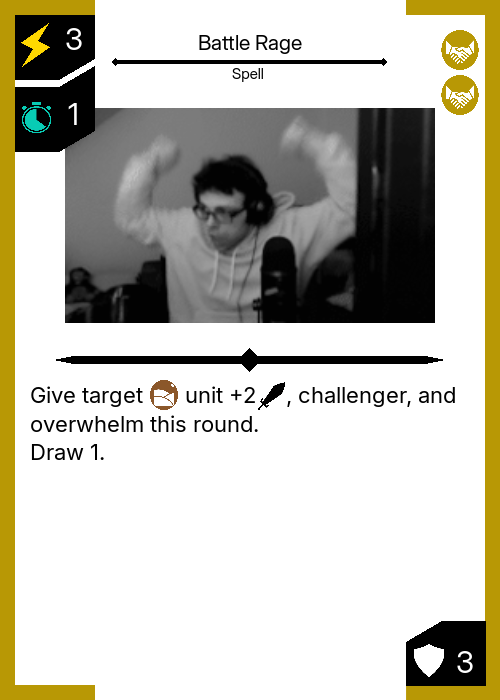
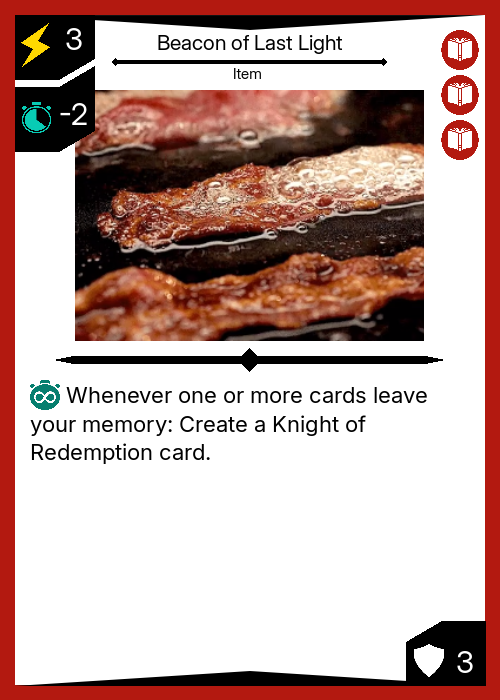
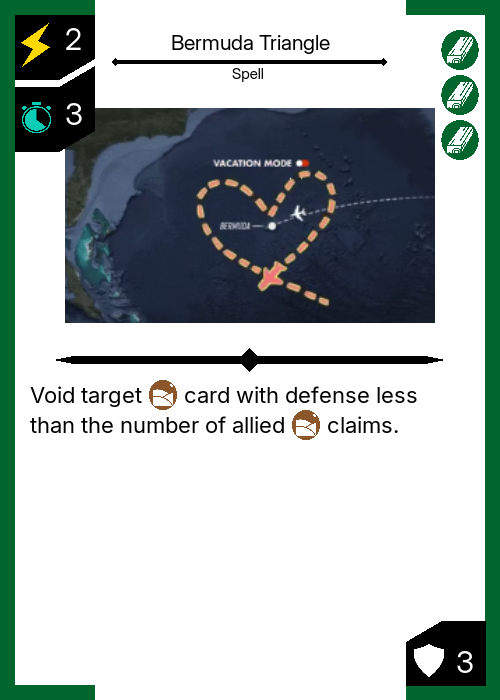
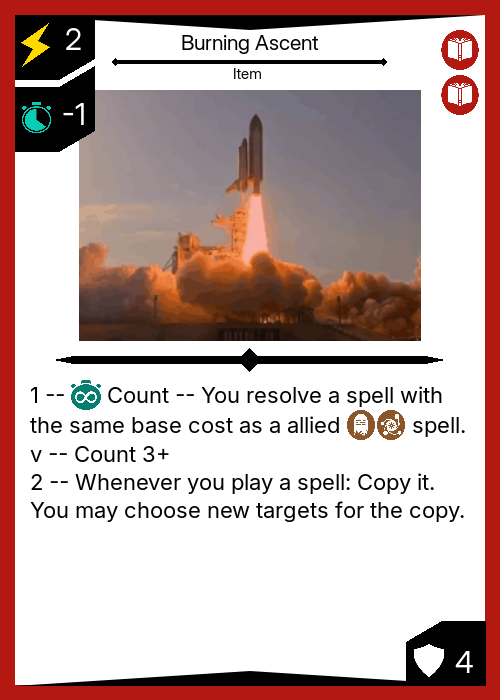

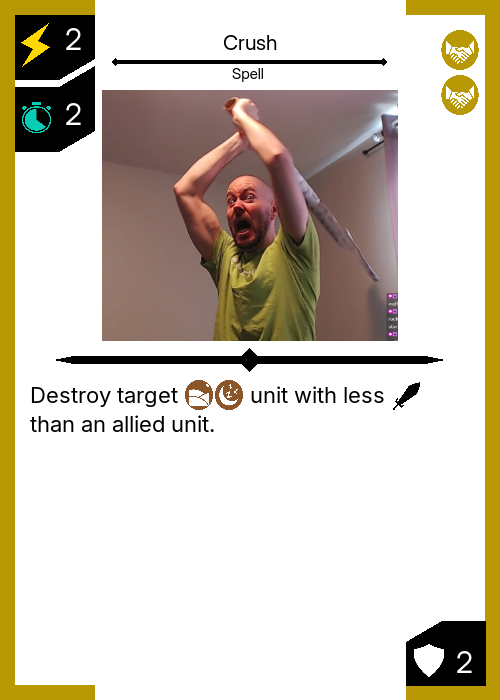
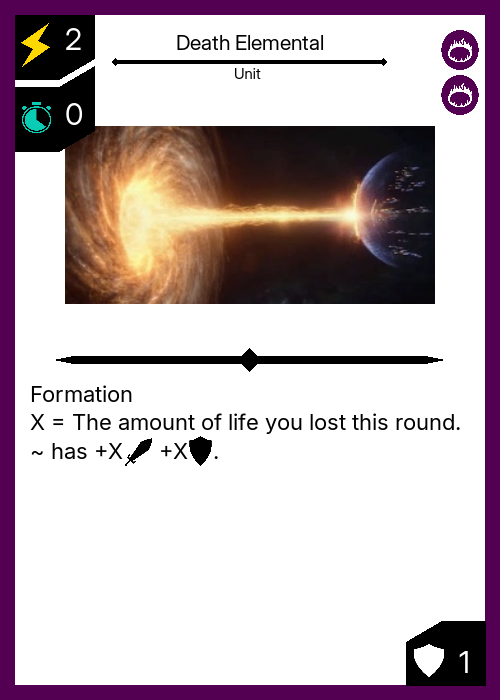
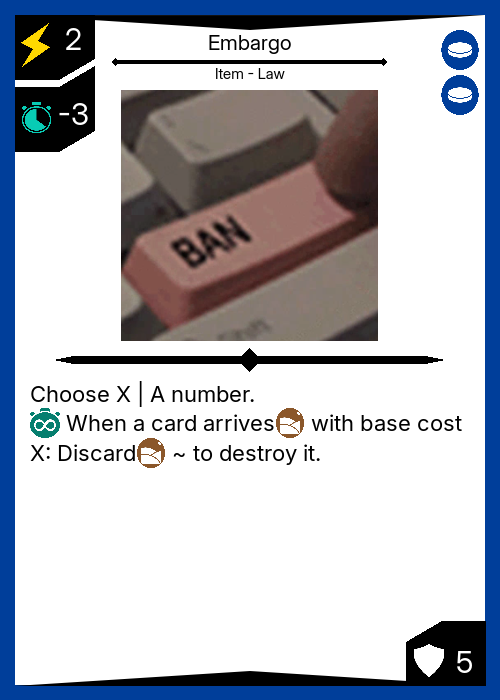
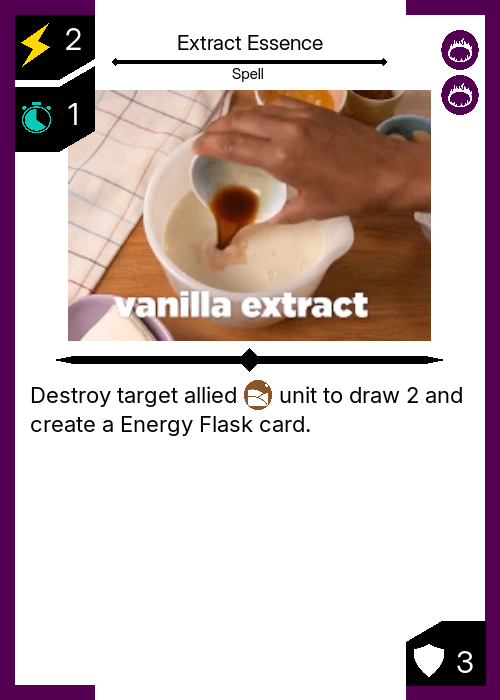
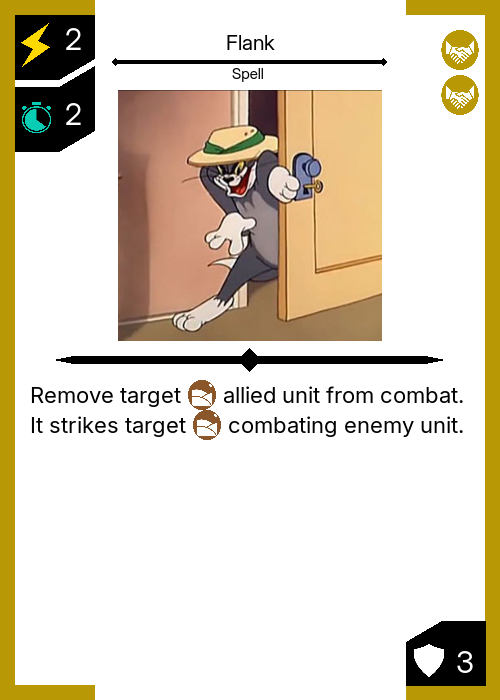
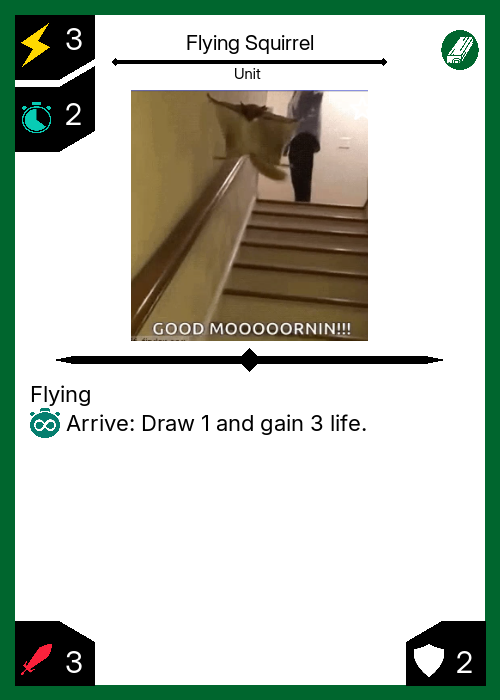
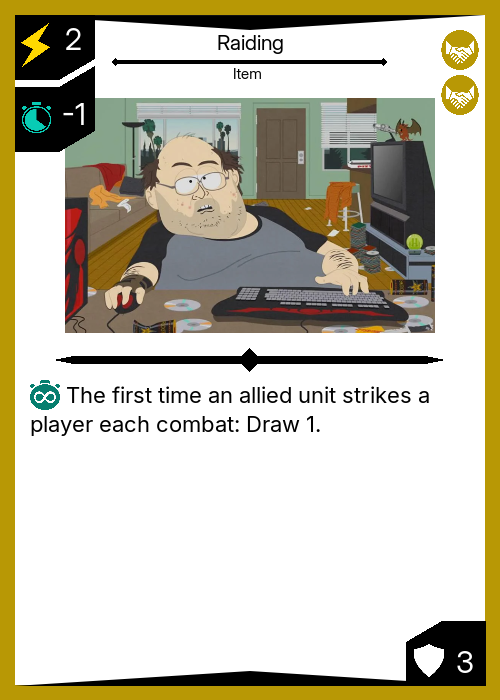
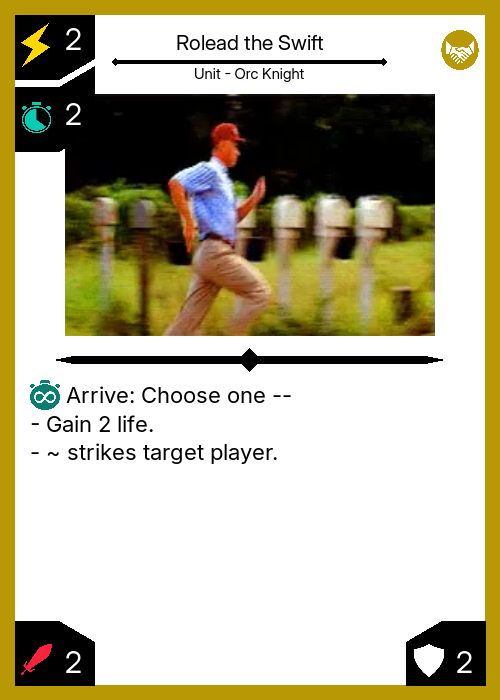
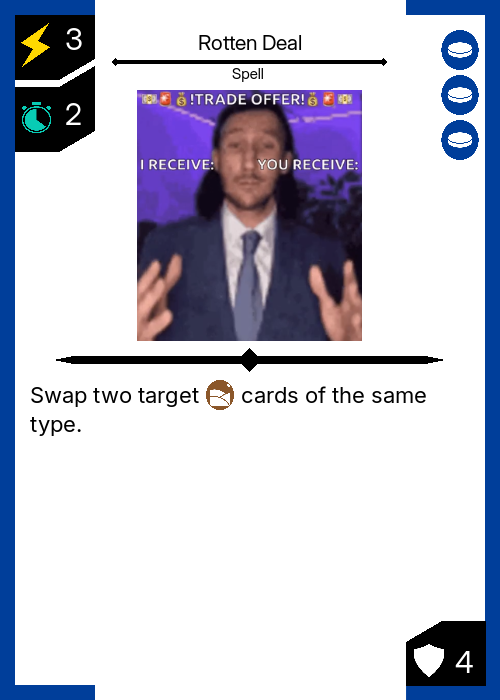
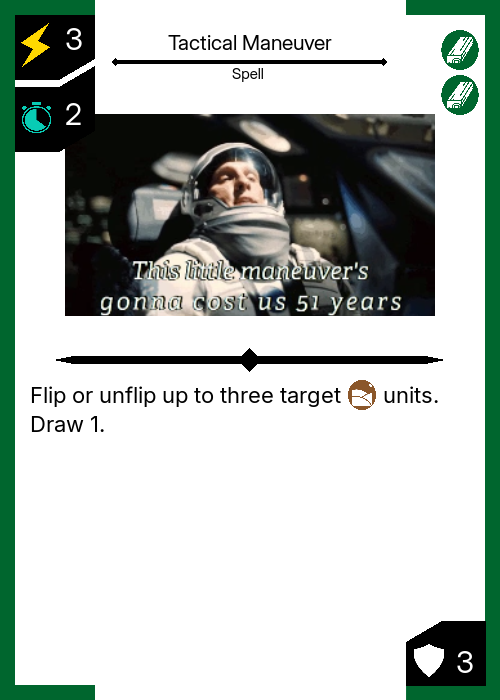
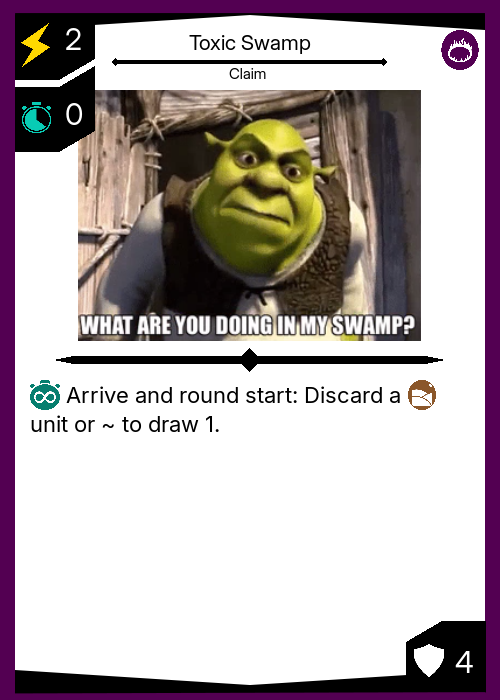
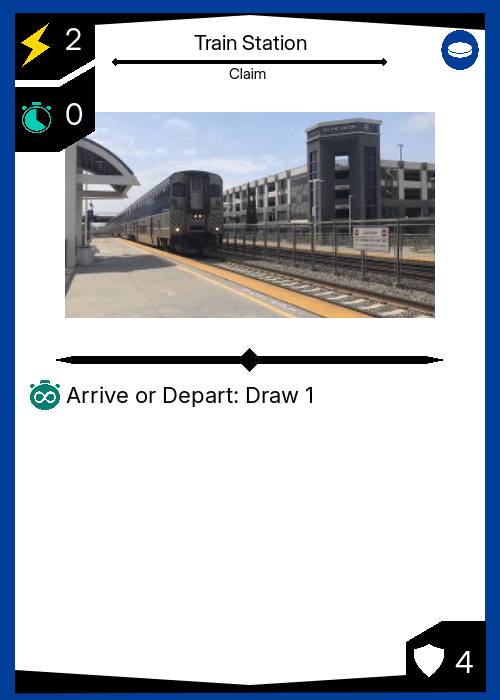
Formats and ways to play the game
These are all just potential ideas. All can be played in best 2/3 or best of one.
- Draft. It’s cube draft.
- Constructed: 60 total cards, max 3x of each card, 15 card sideboard.
- Highlander: 80 cards, max 1x of each, featuring the super cool draft pool! There will be a universal pool of ~30 cards, all realmless. This set of cards can rotate over time, perhaps weekly or monthly, hand picked and brand new cards selected for the pool. At the start of each match, shuffle the 30 card pool and create two {packs} of 10 (numbers not decided yet and must be tested) cards from the top, then draft 5 cards from those packs with your opponent. Do the same thing after game 1 and 2 (if you go to game 3) (no sideboarding) (you are required to put all the cards you draft into your deck) (this may have issues with claim count since you are changing the number of non claims, we’ll have to figure a solution to that out later).
- Mirror Format
- Experimental: fast cycle format. 20 cards, and you cycle through them
Mirror Format
Limited format for 2 players where you draft your cards for each round. Both players begin the game with an identical preconstructed deck of cards (one being the red deck and the other the blue deck). Each deck is a kind of mini cube, with support for a variety of strategies.
Instead of drawing cards normally at the end of each round and start of the game, players draft cards. Also, in mirror format, cards are channeled face down rather than face up.
Source Limited
Limited format for 2 players. Rather than each player having their own deck, 5 decks (each one for all cards of a given source) are shared by both players. The top card of each of these decks is always face up / revealed. When drawing a card, players may choose which deck to draw from. When starting the game, players draw their starting hands by taking two cards from each deck, and keeping 5. All cards are channeled face down, and are not recycled into the decks at round end (players will still draw back to their max hand size).
Ski Draft (questionable)
Both players take 10 cards from the top of their deck. Each player picks 1 card to keep, then passes the rest to their opponent. From pick 2 on, each pick players keep an additional card than the previous pick. Continue until all cards are drafted. Note: in this draft format, chosen/drafted cards are revealed as they are drafted.
- At the end of the round the following steps are carried out:
- Each player may put any number of cards from their hand into their channel zone. The number of cards in a players hand and channel zone + 3, (up to 10) becomes that players’ maximum hand size for the round round.
- Each player puts all cards from their channel zone on the top and/or bottom of their deck in any order/combination
- The draft is carried out, and all drafted cards are added to players hands. (Mirror format can be played with many draft formats, Ski Draft is recommended for players newer to the format, while Hausman draft is worth trying at some point. Feel free to invent your own if you like.)
- Players discard down (to the bottom of their deck) to their maximum hand size.
To begin the game, rather than drawing starting hands normally, start with a draft, with maximum hand size 5.